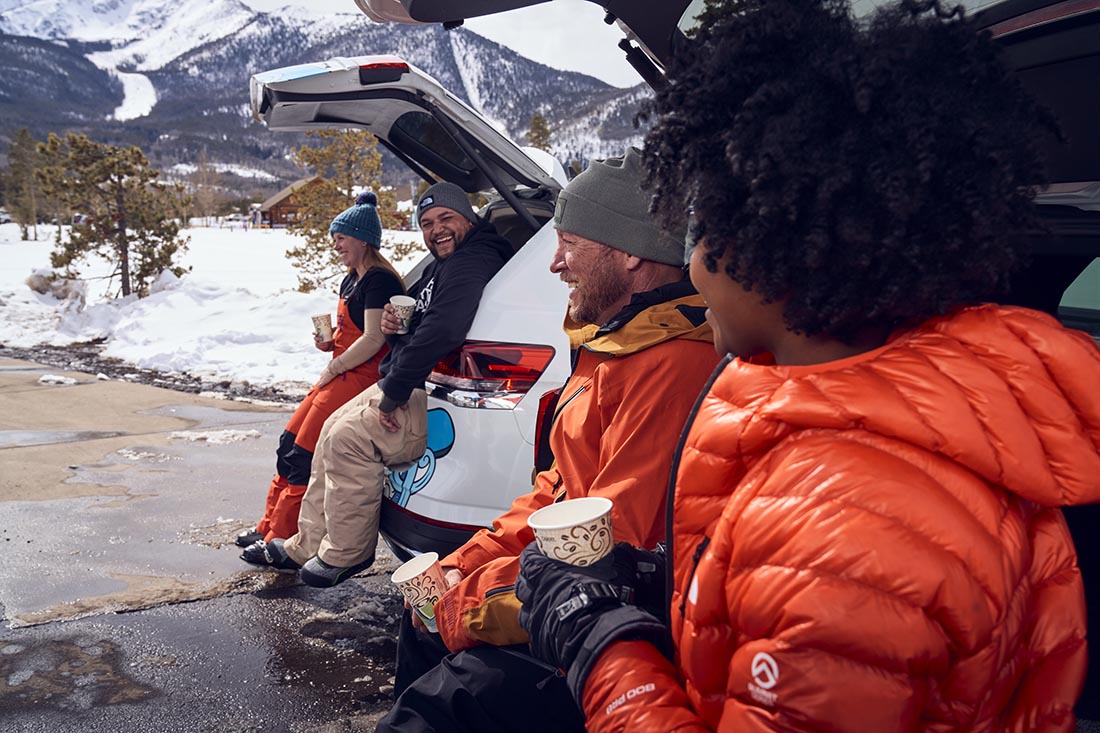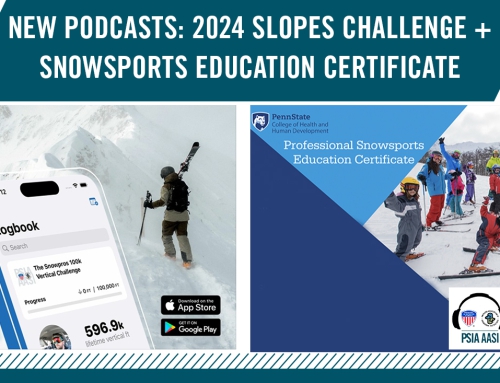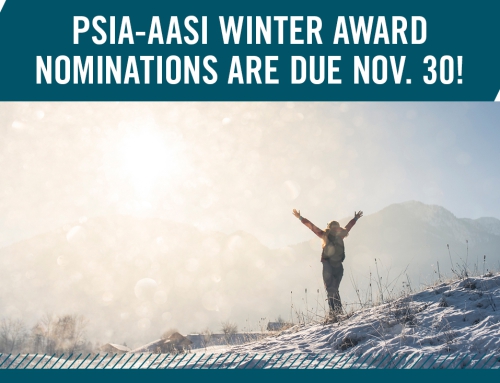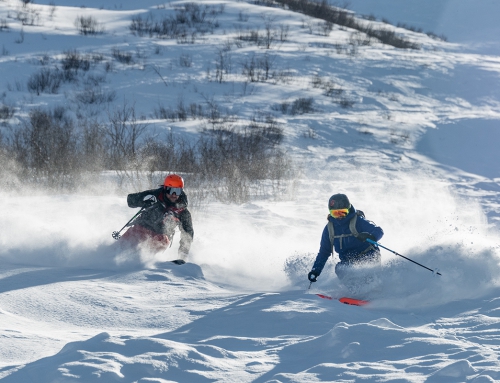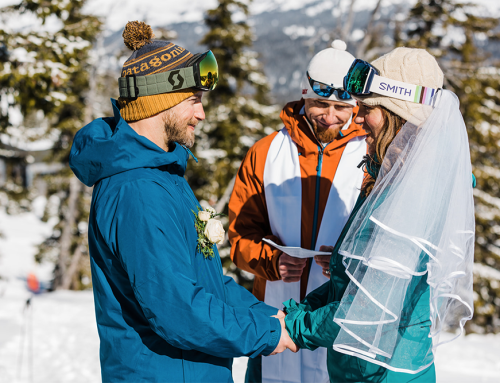How People Skills Make You a Better Instructor, and Person
This article, by Angelo Ross, originally appeared in the Winter 2022 issue of 32 Degrees Magazine.
Recently I overheard someone say, “What are they changing this year?” in reference to the inclusion of the Learning Connection’s people-skill fundamentals in PSIA-AASIs updated certification standards. The what-are-they-changing-this-year attitude demonstrates an incomplete understanding of what is a thoughtful and well-planned modification made in good faith and with the best interest of our students in mind.
So why is it so important we incorporate people skills into our training and certification curriculum?
PEOPLE SKILLS… WHY NOW?
The adoption and implementation of the fundamentals related to people skills (see sidebar) is a watershed moment for our organization and the industry. The concept is not unique to PSIA-AASI; it fits within a more people-oriented philosophy in American education generally – something I can speak to after working in the public-school education system for 20-years. This formalization of the softest of skills is an approach that requires a level of introspection and honesty. It is far more challenging, and deeper than the relatively low-hanging “technical-skills” fruit snowsports instructors have historically picked.
Training clinics, division and national events, and après discussions moving forward will focus on a topic far more elusive than the perfect wedge christie or nollie demo, namely “How do instructors serve as ambassadors in a way that makes snowsports irresistible to people?” (If you’re interested in equivalents in the American education system, investigate lifelong learning, student-centered learning, presumed competence, and 21st Century Skills, for starters).
I am not a huge fan of the title, “ambassador of the sport;” I’ve always found it pretentious, misused, and, now, overused – a marketing buzzword at best. However, these days, when considering our abysmal and unsustainable conversion rate of around 17% (per National Ski Areas Association surveys), perhaps a more ambassadorial spirit makes sense. (By the way, conversion, according to NSAA, is simply the process of turning beginner skiers and riders into repeat customers, and ultimately lifelong enthusiasts of the sport).
The term “ambassador” has roots in the ancient Celtic ambactos, which translates as “messenger” or “servant,” as in “Hi! I’m here to let you know that snowsports are really great! How can I help you to become a lifelong enthusiast like I am?!”
This takes – you guessed it – people skills. It comes down to knowing yourself, meeting people where they are, connecting with them on a human level, and doing what you can to welcome them into our culture.
WHERE THE RUBBER MEETS THE ROAD
Alpine, cross country, snowboard, and telemark certification standards now include assessment of people skills. So, how do you develop them? How do you bring concepts from a manual to life on the hill with your students?
Truthfully, I don’t know. I’m not a psychologist. I’m not a life coach. I don’t have specifics for you, dear reader, to implement. The how-do-I-do-it question is yours to answer. I can tell you that I’ve read the people-skill fundamentals; I think they’re high-quality. I think the people who came up with them (the PSIA-AASI People Skills Task Force) and voted to adopt them (the PSIA-AASI Board of Directors) are top-notch. And I think – considering what we know of educational best practices and being a nice person – they’re necessary to include in our standards and how we teach. We’re talking about some basic notions: knowing yourself, communicating well, and respecting others.
WHY SHOULD YOU LISTEN TO ME?
My only real qualification for writing this article is that I am trying to be more self-aware because I would like to be a better person. I, like you, have experiences to reflect upon while trying to become more self-aware. I, like you, will need some outside assistance with this process because, let’s face it, we’re likely quite biased when it comes to judging ourselves. And for me, like for you, this process will require honest hard work and effort. I will fail, and I will have to dust myself off and try again.
Of the people skills outlined in the certification standards, I decided self-awareness was the best place for me to start my process of becoming a better person. Self-awareness is the foundation of the other outcomes, specifically: self-management, communication, and relationship-and-trust building. Below are four concept-based considerations I found to kickstart my reflective process; you will find many more as you research. This may resurrect a few Psychology 101 concepts for some of you.
Know Your Defense Mechanisms
Remember these? They’re your psyche’s automatic responses for dealing with mental stress. Full disclosure, I find snowsports lessons to be stressful. I also find conducting clinics and PSIA-AASI events, going to work, and many (most?) interactions with other humans to be at least slightly stressful – I’m an introvert, after all.
Recently, while contemplating the practical application of our people skills, I recalled a list of 14 or so defense mechanisms from a psychology course I took years ago and decided to look them up. Projection, regression, compartmentalization, intellectualization, to name a few. As I read the list I wondered, “What is my go-to?” Who do I become when I’m feeling the mental stress of performance or of others’ expectations of me?
- Do I downplay the significance of the moment (denial)?
- Do I regurgitate the manual instead of bringing the information to life in a way that is FUN and relevant to my students (intellectualization)?
- Do I make excuses or become upset with others when I do a mediocre job (rationalization or displacement)?
Ah, it’s best to ditch my defense mechanisms. What do you do when you’re stressed?
Which Carl Jung Archetype Are You?
The mood in this clinic was low-key to begin with, and most of us in the group had known each other for years, so the tone became jovial, maybe overly jovial. But some of those folks had driven over an hour to ski with me, ostensibly to learn something, but on my way home I wondered if they’d gotten the value they’d wanted out of the day.
Jung described universal, mythic figures contained in the collective unconscious, roles we assume unconsciously as expressions of our personalities. Jung’s personalities include:
Which role do you tend to assume in a group? In your household? In your exam? What are the strengths and weaknesses of each? Is that the role you want to assume?
Since teaching and reflecting upon the clinic described above, I am doing my best to remind myself to pepper in strengths of the everyman, the caregiver, and the sage as a strategy to offset the jester who showed up that day.
Assess Your Style of Communication
I can be a passive listener and I’m not proud of it. “Uh huh. Yep, yeah. Wait, what? You never said that!” As it turns out, just because I didn’t hear it doesn’t mean it wasn’t said. It is more likely I got distracted by what my response was going to be or by my stupid phone.
I taught a high school freshman seminar course for seven years in which I covered a unit on communication and leadership styles. Apparently teaching it for seven years didn’t ensure it sank in. From time to time I still struggle with being passive-aggressive (indirect expression of negative emotions) or straight-up aggressive (“you’re an idiot.”), while the assertive style (confident self-expression that is respectful of others) remains elusive.
Another interesting style and one I wasn’t aware of before but found during this research – manipulative communication – has special significance for us. As instructors, we create learning environments for our students to achieve an outcome. Used well, this style allows for discovery of a new concept or skill on the part of the student. Used badly, the instructor benefits at the expense of the students. I’ve found many interesting and informative videos, particularly Ted Talks, about communication, and recommend exploring this topic to see what you find.
Know Your Personality, Vibe, and Style
Introvert vs. extrovert. Sensing vs. intuitive. Thinking vs. feeling. Judging vs. perceiving. These are the familiar categories of the Myers-Briggs Type Indicator. A qualified professional can administer and interpret a professional-level personality inventory like the MBTI for you if you’re interested. I learned through a free, online personality test that I am a “Careful Plodder.”
Apparently, my friends would be surprised if I did anything spontaneous, and I like to walk slowly while looking down (which I already knew). I am not so motivated to have a complete Myers-Briggs evaluation done, but I do find it interesting to consider how my introversion could be perceived by others (particularly while I conduct clinics or PSIA-AASI events), how my dry humor could be misinterpreted as conceit or sarcasm, how my tendency to rationalize concepts may diminish (or seem to diminish) my enjoyment of them, or how my shyness may come across as disinterest.
Have you ever, while in a group, visualized yourself from the outside and imagined how your posture at that time may be perceived by others? Or your tone? Or the fact that, even though you’re hearing every word, you’re staring at the ground, poking a hole in the snow with your ski pole or swaying fore and aft on your snowboard? Maybe it’s worth asking a few friends (probably close friends) how they perceive you, what message they think you’re sending to the world. Is it the same message you intend to send?
FIND YOUR PATH TO SELF-AWARENESS
Okay, so now what? I have no idea. This is your question to answer. Your gig is your gig, and mine is mine. We all have our own strengths, and weaknesses, but we also have the same task: To be honest with ourselves about who we are, to communicate well, to respect and get to know others, and to help them get where they intend to go. This is no easy feat.
Honest self-evaluation, identifying your personal strengths and the specific actions to turn your deficits into strengths, changing old habits, growing, and working with others effectively is a life’s work. Fortunately, you can consider defense mechanisms, Carl Jung’s Archetypes, styles of communication, or personality types to become more self-aware.
The effort is worth it because the alternative is to stagnate, to not improve. We all can be more respectful of ourselves and of others; not being perfect is being perfectly human. Worst-case scenario, you try to get better and make minimal progress. Guess what, that’s progress. Best case scenario, you improve your quality of life for yourself and for others, welcome new skiers and riders into our community, and increase general happiness on the planet. How cool is that?
Self-awareness paves the way for self-management, the ability to identify your mood and your triggers, to be proactive about your habits, actions, and attitude, to avoid personal pitfalls, and to be purposeful about choosing a meaningful two-way communication style. So much self-mastery should free up the bandwidth to recognize and influence the behaviors, motivations, and emotions of others, and to develop relationships based on trust: the perfect (snow)storm of self-actualization for all.
Angelo Ross is the technical director for Pennsylvania’s Seven Springs, Hidden Valley, and Laurel Mountain Snowsports Schools and a member of the People Skills Task Force and Eastern Division Alpine Education Staff. He is owner of MasterCoach LLC, training and education consultants, and can be reached at . He would like to thank Sue Kramer for valuable conversations and research contributions to this article.

